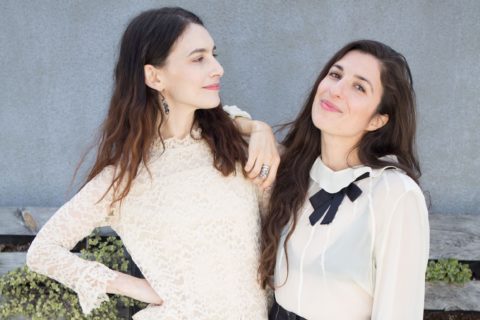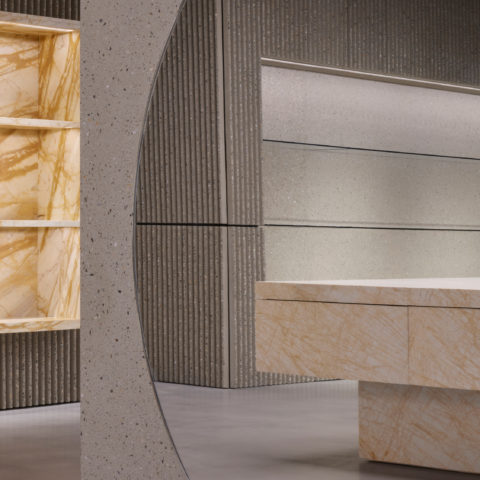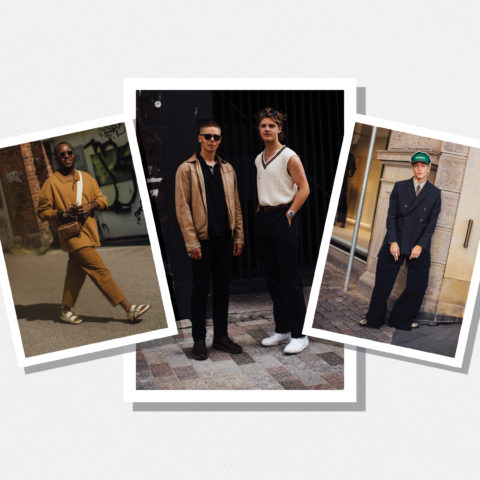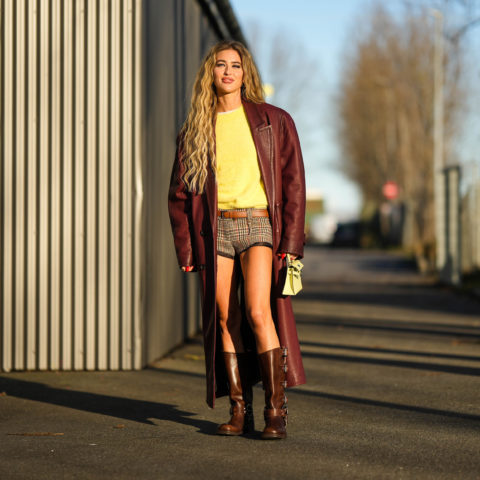How To Dress Professionally In the Era of the Millennial Side-Hustle
It doesn’t matter how new or expensive the clothing in your closet is. It also doesn’t matter what is trending. You want to ask yourself: how do I want to feel in that room to best express myself?
With more and more actresses becoming writer/director/producers (Issa Rae, Greta Gerwig and Brie Larson are just a few recent examples), female performers are now thinking about style beyond the press junket and red carpet. So how do you dress when you’re meeting with potential financiers or pitching your show to a studio? Writer/performer Liane Balaban (who appears in Mina Shum’s Meditation Park—in theaters across Canada and on Netflix USA now) caught up with celebrity stylist and budding perfumer Natalie Toren to find out.
LB: Natalie, you’ve styled Canadian actors like myself, Dan Levy, Annie Murphy and Kathleen Munroe, who are all performer/writer/creators. How is your process different when you’re styling a client for a red carpet event versus a pitch meeting, or an interview?
NT: While there is a lot more room for individuality and fashion-forwardness on the red carpet now (social media really allows for credit to be given to up-and-coming designers) it is still a venue to showcase glamour, likability and for actors, malleability. This is in stark contrast to dressing for an in-person presentation, where you use clothing as an extension of your voice: to assert a statement of identity and confidence. Ultimately it can be far more personal, you can wear your favourite blazer from 10 years ago—the one that makes you feel like a million bucks. You can wear tried and true pieces that mean something to you, or designers that you truly believe represent your aesthetic and creative values. Certain designers don’t always make the strongest impact on a red carpet but in person have tremendous presence (I’m looking at you, Philo-era Céline, Zero Maria Cornejo, Margiela-era Maison Martin Margiela and Dries Van Noten).
LB: When I was pitching my first project as a writer last year, I felt so confident because you helped me “shop my closet” to put together this very cool, almost 1970s menswear look. How did you do that?
NT: I loved doing that with you, especially since you have been collecting vintage pieces for a long time. It was really a process of experimentation and discovery that led us to this very Annie Hall look, culled from the garments that, when you put them on, you had amazing posture, a fitted silhouette, and yet a feeling of comfort and ease. It was a strong perspective – a play on an iconic film character – and there were unexpected thrifted elements.
LB: I would never have combined those pieces on my own! How can any creative think like a stylist to figure out what to wear for a high-stakes meeting?
NT: First of all, you don’t need to go all out and shop for a big pitch meeting: to wear expensive things, to dress all in black, to have some status handbag. I find the best outfits for these kind of presentations are a mix of comfort, structure (often provided by jackets, blazers, trousers, belts) and beautiful fabrics that tell a story. You can wear a cool vintage T-shirt and a blazer and trousers. You can wear a lovely floral chiffon dress that you would never have thought “meeting appropriate,” paired with tights, a motorcycle jacket and boyish brogues. You are a creative professional and you have stories to tell and every element you are wearing can convey that thoughtfulness and creativity.
And I want to stress that it doesn’t matter how new or expensive the clothing in your closet is. It also doesn’t matter what is trending—big sleeve ruffled blouses might look incredible in a photograph but come across as fussy in a meeting. You want to ask yourself: how do I want to feel in that room to best express myself? Do I want to be strong and imposing? Do I want to be really soft and approachable but then have some hard, edgy or unexpected element by way of surprise? Once you have a sense of the mood you are going for, you can start trying on everything you feel fits you well and is in line with that idea. Even the choice between wearing pants or a skirt can jumpstart your direction. It can be a very psychological exercise.
LB: Speaking of psychology, what are your general rules for feeling good in your clothes?
NT: I love juxtaposition: maybe of soft and strong types of clothing, or proportion (a short dress with a very long blazer, very wide leg pants with a close fitting top), or of textures. Incorporating fine fabrics (silk, tweed, cashmere, poplin) speaks volumes more than logos, and helps communicate your taste level. There are some really exciting blazers, longline dusters, silk jackets and structured cardigans on the market now (take a look at Proenza Schouler, Raey, Gabriela Hearst, Joseph, or Blazé Milano) that lend some gravity and crispness to just about anything beneath.
LB: Tell me about your upcoming perfume project.
NT: My dive into the world of perfume is very similar to my styling work: guiding clients to find personal scents and expand their sensory experiences. I am convinced that I can find anyone a signature scent. I am fascinated by how scent personalizes and customizes to each wearer, but also presents core ideas and stories embedded into its very molecular composition.
LB: Does a perfumer dress differently from a stylist?
NT: Perfumers are inextricably connected to a sense of history, literature and poetry, and of working in deep meditation to observe materials over time. Because of this, I think there’s more elegance and romance to the way a perfumer might present themselves. Stylists, by nature, tend to be enthralled by the new and the now, always with a roving eye for the next.








